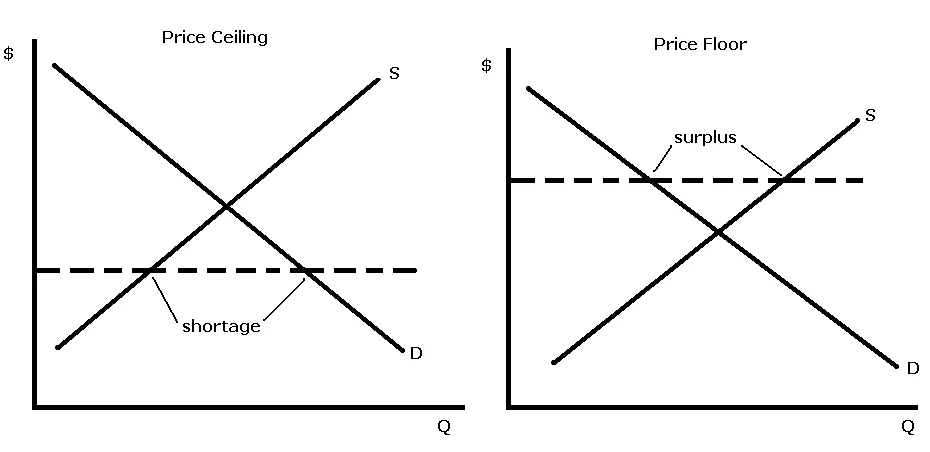Price Ceilings and Floors
A price ceiling sets the maximum price of a good or service below the market equilibrium price, keeping prices artificially low for essential goods to keep them affordable. However this often creates shortages. Rent Control is an example of this. Governments impose a price ceiling so that more people would find it affordable. But as there is a shortage, It can be hard finding rental units.
A price floor sets the minimum price of a good or service above the market equilibrium price to protect producer’s incomes. This however leads to surpluses. Price floors are common in the agricultural industry, as the government might purchase excess crops to maintain farmers’ incomes. In return, consumers have to pay a higher price for goods.

Elasticity
-
If , demand is elastic (quantity demanded responds strongly to price changes).
-
If , demand is inelastic (quantity demanded responds weakly to price changes).
-
When , the demand curve is perfectly inelastic, so demand remains constant even as price changes.
-
When , the demand curve is perfectly elastic, so demand falls to 0 as price changes.
Oil is often considered inelastic because it is a necessity for transportation and industrial use — consumers cannot easily reduce their oil consumption even if prices rise.
Income Elasticity of Demand (YED) measures the responsiveness of quantity demanded to a change in consumer income:
-
If , the good is a normal good (demand rises with income).
-
If , the good is an inferior good (demand falls as income rises).
Cross-Price Elasticity of Demand (XED) measures how the quantity demanded of one good responds to a change in the price of another good:
-
If , the goods are substitutes.
-
If , the goods are complements.
For example if the price of coffee rises, the demand for tea (a substitute) may increase.
There is also a Price Elasticity of Supply (PES) that uses the same logic.